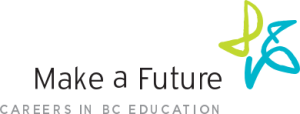
Qualities of an effective culture of learning
What helps build a supportive community of learners? Teachers know the factors that transform classrooms into dynamic places where students challenge themselves and their peers to be their best – and they are similar to those that support a culture of learning amongst educators.
Professional learning is most effective when it:
- challenges current thinking
- is evidence-based and student-focused
- encourages people to create learning partners
- is aligned with curriculum
- incorporates best practices in learning design
- measures student results
- has the support of leadership is part of a broader culture of learning
Challenges current thinking
Professional learning that challenges an educator’s current thinking – rather than learning opportunities that simply provide “the same old material” – can lead to powerful changes. When perspectives or current practices are challenged, there may be a reaction to defend those practices. However, people are likely to consider changing their practices if they are provided with evidence of the value of the change. Even small shifts in practice and trying out new ideas can lead to larger changes later on or a change in attitude.
Is evidence-based and student-focused
Professional learning should be evidence-based. There is little or no value to changing pedagogical practices if there is no evidence that it will positively impact student learning.
Encourages people to create learning partners
Trying to make a difference to one’s own practice is difficult. Having others (even just one other person person) making changes at the same time can make it easier. After all, learning is a social activity and being able to discuss our own learning as professionals will help us learn more deeply and quickly.
Is aligned with curriculum
Professional learning activities that are anchored to the curriculum have more meaning and are perceived as more authentic. For example, learning about best practices in formative teaching and learning will have more immediate impact if it is embedded in a discussion of new curriculum or has a curricular focus. This allows teachers a shared starting point for working together. With success in one area, it is easier for teachers to see how new techniques and approaches can be applied elsewhere.

It’s like a band…we could each go and pay our own flute, oboe, etc….and it would sound fine. But all together we manage to discover new harmonies, new chords, and we just sound better. Together we make beautiful music.— Brandi, Carla, Laurie
Incorporates best practices in learning design
Engage teachers during the learning process by presenting a balance of theory, research and practice so they understand the “what and the why” of an initiative. As with any learning, make sure to provide adequate time for learners to access knowledge in manageable chunks, allow practice time between sessions, and ensure there are opportunities to share successes, failures and questions. It can take years to effectively change practice – a professional learning goal that changes every school year has little chance of being embedded in practice.
Measures student results
How are professional learning opportunities linked to student results? Collecting evidence of student achievement can measure the effectiveness of professional learning plans. This evidence can be obtained through a wide range of evaluations, including assignments, projects, quizzes and school-created tests.
Has the support of leadership
Leaders can make a difference by showing their commitment to a culture of learning. Principals who actively participate in the promotion, encouragement and support of a learning initiative increase the chance of its effect on teacher and student achievement. Research provides evidence that significant positive impacts emerge when principals learn along with the teachers. Teacher-leaders can also play an important role.
Is part of a broader culture of learning
Great things happen when a school promotes a culture of learning – a culture where ongoing learning and taking risks in one’s learning are valued. In these environments, students, teachers and administrators are encouraged to take risks in their own learning and do not fear judgement.

We just seem to thrive off of bouncing ideas off of each other…and without judgement. We can add to or tweak our ideas to make it all better for student learning and our own.— Brandi, Carla, Laurie
